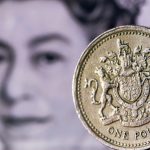Yesterday’s trade saw GBP/USD within the range of 1.5240-1.5326. The pair closed at 1.5311, soaring 0.33% on a daily basis, while marking the first gain in the past three trading days and also the most notable one since October 14th, when it surged 1.50%. The daily low broke below the low from Wednesday and has also been the lowest level since October 13th, when a low of 1.5198 was reached.
At 8:16 GMT today GBP/USD was gaining 0.17% for the day to trade at 1.5335. The pair overshot the upper range breakout level (R4), as it touched a daily high at 1.5359 at 6:45 GMT. It was also a test of the high from October 27th (1.5360).
Today GBP/USD trading may be influenced by a number of macroeconomic reports as listed below.
Fundamentals
United States
Personal Income, Personal Spending, Employment Cost Index
Personal spending in the United States probably rose for a fifth straight month in September, up 0.2%, according to market expectations, while personal income was probably up for a sixth consecutive month in September, increasing at a monthly rate of 0.2%. Consumer spending, which accounts for over two thirds of the nations GDP, rose 0.4% in August.
At the same time, personal income increased 0.3% during the same month, while disposable personal income (DPI) rose USD 47.1 billion (or 0.4%). Private wages and salaries rose USD 31.5 billion in August, compared with an increase by USD 40.0 billion in the prior month. Government wages and salaries were USD 4.1 billion higher in August, compared with an increase by USD 3.8 billion in July.
Higher-than-expected rates of increase imply good employment conditions and, therefore, are dollar positive. The Bureau of Economic Analysis is to publish the official figures at 12:30 GMT.
Meanwhile, the Employment Cost Index (ECI) for the United States probably rose 0.6% during the third quarter of the year compared to Q2, following another 0.2% gain in Q2 compared to Q1. If so, this would be the 19th consecutive quarter of growth. This index measures the change in the price of labor, defined as compensation per employee hour worked. It shows changes in the cost of compensation not only for wages and salaries, but also for an extensive list of benefits. The ECI is considered as an indicator, reflecting cost pressures within companies that could trigger price inflation for finished goods and services. A larger than expected rate of increase would generally provide a certain support to the US dollar. The Bureau of Labour Statistics is to release the quarterly data at 12:30 GMT.
Chicago PMI
The Chicago Purchasing Managers Index (PMI) probably accelerated to a reading of 49.0 in October, according to expectations, from 48.7 during the prior month. The latter has been the lowest reading since May 2015, when the PMI came in at 46.2. The index reflects business conditions in the regions manufacturing sector and is interrelated with the Manufacturing Index, published by the Institute for Supply Management (ISM). A reading below the key level of 50.0 is indicative of pessimism (contraction in manufacturing activity). In case the PMI improved more than forecast, this would have a moderate bullish effect on the US dollar. The MNI Deutche Börse Group will release the official reading of the Chicago barometer at 13:45 GMT.
Reuters/Michigan Consumer Sentiment Index – final estimate
The monthly survey by Thomson Reuters and the University of Michigan may show that consumer confidence in the United States improved in October. The final reading of the corresponding index, which usually comes out two weeks after the preliminary data, probably came in at 92.5, up from a preliminary value of 92.1. If market expectations were met, this would be the highest level since July 2015, when the gauge of sentiment was reported at a final 93.1. In September the gauge of confidence came in at a final reading of 87.2, up from a preliminary value of 85.7. The survey encompasses about 500 respondents throughout the country. The index is comprised by two major components, a gauge of current conditions and a gauge of expectations. The current conditions index is based on the answers to two standard questions, while the index of expectations is based on three standard questions. All five questions have an equal weight in determining the value of the overall index.
According to preliminary data, the sub-index of current economic conditions, which measures US consumers’ views of their personal finances, went up to a reading of 106.7 in October from a final 101.2 in September. The sub-index of consumer expectations improved to a flash reading of 82.7 in October from a final value of 78.2 in September.
Respondents in the survey expect that the 2016 rate of inflation will probably slow down to 2.7% from 2.8%, as expected in the September survey.
In case the gauge of consumer sentiment showed a larger increase than anticipated, this would have a moderate bullish effect on the dollar. The final reading is due out at 14:00 GMT.
Bond Yield Spread
The yield on UK 2-year government bonds went as high as 0.665% on October 29th, or the highest level since September 21st (0.665%), after which it closed at 0.637% to add 9.2 basis points (0.092 percentage point) compared to October 28th, while marking a second consecutive trading day of increase.
The yield on US 2-year government bonds climbed as high as 0.736% on October 29th, or the highest level since September 25th (0.743%), after which it closed at 0.724% to add 1.7 basis points (0.017 percentage point) compared to October 28th. It has been the second consecutive trading day of increase.
The spread between 2-year US and 2-year UK bond yields narrowed to 0.087% on October 29th from 0.162% on October 28th. The October 29th yield spread has been the lowest one since October 26th, when the difference was 0.086%.
Meanwhile, the yield on UK 10-year government bonds soared as high as 1.932% on October 29th, or the highest level since September 17th (1.973%), after which it slid to 1.928% at the close to add 12.7 basis points (0.127 percentage point) compared to October 28th, while marking a second straight trading day of increase.
The yield on US 10-year government bonds climbed as high as 2.180% on October 29th, or the highest level since September 25th (2.198%), after which it slipped to 2.164% at the close to add 6.3 basis points (0.063 percentage point) compared to October 28th, while marking the second consecutive trading day of increase.
The spread between 10-year US and 10-year UK bond yields narrowed to 0.236% on October 29th from 0.300% on October 28th. The October 29th yield difference has been the lowest one since October 26th, when the spread was 0.228%.
Daily and Weekly Pivot Levels
By employing the Camarilla calculation method, the daily pivot levels for GBP/USD are presented as follows:
R1 – 1.5319
R2 – 1.5327
R3 (range resistance) – 1.5335
R4 (range breakout) – 1.5358
S1 – 1.5303
S2 – 1.5295
S3 (range support) – 1.5287
S4 (range breakout) – 1.5264
By using the traditional method of calculation, the weekly pivot levels for GBP/USD are presented as follows:
Central Pivot Point – 1.5374
R1 – 1.5447
R2 – 1.5579
R3 – 1.5652
S1 – 1.5242
S2 – 1.5169
S3 – 1.5037





